DMin
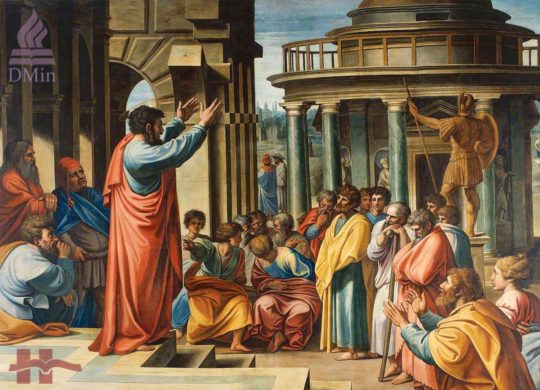
25 FEBRUARY 2020
These are the products of a Doctor of Ministry Webinar conducted by Dallas Theological Seminary: “Look Before You Leap.”
Click on each item below for content …
Video
Handout
Comments/Questions
Several questions were asked by chat, some of which I was able to answer in the live forum. Expanded answers from that event and answers to questions that I couldn’t get to then are written out below …
ef
Why is it that christocentric (Christ-centered) preaching seems to be the prominent and accepted hermeneutical approach in most conservative, evangelical seminaries today? Why is it assumed and accepted? How do you respond to their accusations that anything less is mere moralistic preaching?
I believe every child of God knows that Scripture is about Christ in some way—it is christological. The question is, “How is it christological?” The only option thus far (for the most part) has been the christocentric/redemptive-historic approach. For that simple reason, because there has been no other option, this has been “the prominent and accepted” mode of operation. Unfortunately, its hermeneutic is deficient (as I have argued in my chapter in Homiletics and Hermeneutics: Four Views on Preaching Today [Baker, 2019]). It fails to adequately do justice to the intricacies of the text, the filigrees of its function, and the nuances of its language—all of which point to what the author is doing with what he is saying. The field of language philosophy that investigates authorial doings, pragmatics, has been untouched by biblical scholars. I think once we see what authors do with what they say, the depth of the text increases manifold: it directs our lives in specific ways, so that we become more Christlike. Therefore, the option I provide to perform a christological reading of Scripture—I call this a christiconic hermeneutic (from Rom 8:29)—both does justice to the text and connects it to Christ.
Relationship to God mandates responsibility towards God. When one becomes a child of God, God expects one to live a life worthy of his name, in imitation of the Christicon. This is true even of OT texts. (See my Privilege the Text! [Moody, 2013] for an expounding of this notion.) God’s call to his children to obey cannot, and should not, be derogatorily labeled “moralistic.” Again: relationship first; responsibility later. The Bible—all of it—was written to the people of God. So let us not forget: relationship mandates responsibility. Needless to say, as I always assert, this is not some self-motivated exercise: it is to be an obedience dependent on the power of the Holy Spirit—a God-glorifying, Spirit-driven, merit-rejecting, grace-accepting, faith-exercising endeavor of obedience!
ef
Help us understand the difference between your “thrust” vs. “big idea.”
How many words do you think you typically use to articulate the thrust of the text?
When you talk about the thrust are you referring to the thrust of the biblical author (Moses, Mark, or etc) or the divine author (the Spirit) or both?
Do you think that there is only one thrust of a text?
The thrust (better: pericopal theology, henceforth PT) is all that the text/author is doing. All! Another way to put it: it is the experience intended by the author for readers to have. Here is the key: PT (experience of the text) takes all the words of the text to convey it. Nothing can substitute for the text and expect to retain the same thrust/PT/experience. Nothing. It takes all the words of the text to convey what the author wanted to convey, what the author was doing.
The Big Idea (henceforth BI) is a distillate, a reduction of the text into a formally structured proposition (with subject + complement) made up of a dozen or so words. BI practitioners claim that this is the take-home message, wrongly assuming that this creation of the preacher captures everything the text is saying (they don’t usually say anything about textual/authorial doings). If they are right (and I believe they are not), then all a preacher needs to do is concoct a BI from the text and convey that BI to listeners (with some illustrations/application) thrown in. Essentially the verbal plenary inspiration of the text is rendered superfluous and unnecessary. How the text says things is thereby rendered irrelevant. This is a gross misunderstanding of language and how it functions, of texts and how they function, and, especially, of Scripture and how it functions. [For more, see my “Time to Kill the Big Idea?” article and a couple of responses to it, as well my rejoinders to both; all these are posted on my website: https://www.homiletix.com/kill-the-big-idea/.]
So I don’t express the PT. It is inexpressible apart from the words of the text. Any other wording makes the product a lossy and poor reflection of the PT. [There are uses of reductions in homiletics; I use them myself. See my article for more on that.]
When I say thrust/PT of, say Mark, I mean A/author = both divine and human author. For this I don’t make a distinction between the two. And, yes, I think there is only one thrust/PT of a text. That’s how language always functions (even with innuendos and multiple connotations: the author is doing one thing).
ef
Do NT authors employ a pericopal theology to interpret the OT? If the thrust is how the Spirit and biblical author attempt to communicate through a text, then would you say that the NT authors when using the OT capture correctly the thrust of the text intended by OT author. Matt 1:22—did the thrust change?
I argue that there are varieties of uses of the OT in the NT. Rather than consume space here, I’ll refer readers to the last part of my Rejoinder to Arthurs and St. John (go here: https://www.homiletix.com/kill-the-big-idea/). In brief, most OT citations of NT are not literary, rhetorical, grammatical, historical expositions of the OT. Many are allusions, intertextual puns, and illustrations; some are prophecy fulfillments; few are actual expositions (1 Tim 5:18 comes to mind); and there might be other kinds of uses in addition. Thrust/PT of the OT is rarely the consideration of NT authors using the OT: as mentioned, more often than not, the OT is being used in other ways. In other words, when one interprets the NT containing citations of the OT, one must attend to what that NT author is doing with that citation. When one interprets the OT source, one must attend to what that OT author is doing with what he is saying.
ef
Do you find that genre will inform the thrust/pericopal theology?
Do authors obey the rules of a genre (narrative, poetry, epistle) to develop a thrust of the text?
How do you preach a dialogue, like John 8:13ff.?
Only in a general sense does genre (both words have a similar etymology!) dictate the PT. For instance, take the genre of “dessert”: all kinds of foods will fall into that category, all linked in a general/generic fashion as being sweet, calorific, and consumed after a meal. But cheesecake (a dessert) is vastly different in taste, texture, and delight from anko or banana pudding or payasam. Or for e.g., take the Psalms. One character of that genre that I’ve found helpful is that these songs are loaded with emotion and the interpreter must pay attention to that. That’s a genre characteristic. But that doesn’t distinguish the specific differences between, say, Ps 88 and Ps 150. So while authors will respect the genre—emotion in Psalms, for e.g.—the specific thrusts/PT of Ps 88 and Ps 150 have to be conveyed by other means; genre is too non-specific for the specificity of the kind we are talking about with PT. In other words, while genre is generally (pun intended!) helpful, it is only of some use for distinguishing PT of texts. Just like the rules of grammar remain virtually same no matter what the genre, the “rules” of pragmatics (whatever they may be) remain the same. Authors always—always!—do things with what they say, and when it comes to texts, they have only limited means at their call to do things: they have to use words and repetitions and wordplays and structures and stuff (but no indentations, paragraphs, italics, bolds, font changes, etc., that modern writing has; and no tonal and gestural and facial hints that speech might have). So whether it is dialogue (one has to ask why John included what dialogue he did—what was he doing with what he was writing) or story or song or prophecy, pragmatics has to be considered and PT/thrust discerned. Without that, there can be no valid application!
ef
Can you surface some of the most common textual “clues” that reveal the author’s thrust?
Can preachers effectively understand the thrust of Scripture simply studying English translations? It seems that a preacher needs to work with the biblical languages to some extent, or perhaps heavily, when they’re working to discover the thrust of the text.
This is a tough one. I’ve tried categorizing clues, so that my students may have a method to discerning PT on their own. Unfortunately, my attempts have been in vain. I think that this discernment of PT is a recognition of textual artistry. Forms of art can rarely be completely “methodologized” as if it were a science. That being said, do pay attention to text’s wordplays, word choices, chiasms, sequences, structures, alliterations, puns, repetitions—all kinds of “filigrees of structure and nuances of language” (as I like to describe it). Beyond that, allow yourself to be led through a biblical book, pericope by pericope (as my commentaries do). After going through a bunch of pericopes, you will begin to get the hang of it. It is caught, more than taught. So for those who want to look through more examples, other than the brief ones I noted in the Webinar, grab one of my commentaries. (And if, in the process, you do unearth an algorithm or methodology, make sure you let me know!)
In any case, I think knowing the original languages well enough to be able to handle the tools (my commentaries in which every Greek/Hebrew word is both translated and transliterated, Logos, etc.) is essential.
ef
What are the common/biggest mistakes when making the move from text’s thrust to application?
The thrust/PT of the text will likely have a general application inherent/implicit in it. Like, for e.g., Eph 5:18 (not a pericope, but useful for illustration). The Theological Focus (a reduction of the PT) = God’s people avoid drunkenness. Application inherent/implicit = Don’t get drunk! But that’s not good enough: a preacher—the shepherd/spiritual formation director/the parent—needs to spell out what specifically is the first actionable step listeners can take to Don’t get drunk! If the audience has the habit of driving by a liquor store on their way back from work and purchasing spirits and getting drunk at home, one specific application may be: Change your driving route! And so on. To me this is the biggest mistake (once the PT has been accurately discerned): Not giving specific, habit-forming applications. (See my A Manual for Preaching [Baker, 2019] for more.)
ef
How can we build on what we’ve learned from “The Big Idea” of preaching from Haddon Robinson and move toward christiconic preaching/pericopal theology?
As I see it, preaching has two major tributaries: hermeneutics (how the text is understood and its PT discerned by the preacher) and rhetoric (how what has been caught from the text is conveyed to listeners). Most Big Idea practitioners are experts in the latter. We can learn a lot from their expertise. On hermeneutics, not so much, unfortunately; they tend to rely on Bible scholars and commentators who have not paid any attention to authorial doings, sad to say!
In any case: NEVER give up on the text. Grapple with it, in prayerful submission, till it yields the authorial doing!
ef
What has the response been when you have shared this model at different seminaries, etc.? How has God used this work in homiletics as a whole?
There has been traction over the years: lectureships in almost all of the major evangelical seminaries (the most recent: Mullins Lectures at Southern Seminary in Louisville next week); reasonable book sales; positive responses to presentation, classes, seminars, etc. But … not fast enough for me. No, not for any personal glory, but for y’all’s grandchildren’s sake, that they don’t have to suffer through insipid preaching as we do do these days, preaching that does not respect the pericopal theology, the doings of authors, and that thereby offers no valid application, no habit- and life-changing undertakings, no impetus towards conformity to Christ.
ef
I have been preaching full-time for the past three years since graduation, with a christiconic approach specifically … I’d say the response has been rather harsh toward it. But with younger believers, even unbelievers, the approach has been fresh, helpful, and received with an appreciation of application. Thoughts?
I have had the opposite reaction in churches I’ve preached in, from young and old. I find that that the power of the word is unleashed when one preaches in this fashion! The people of God have just swallowed this up and want more! I’d aver that God is saying: “You preach my agenda; I’ll back it up with my power!” I’m convinced of it!
ef
What is the upper limit of how big you think a pericope can be? How do you manage preaching a long pericope while also managing the attention span and time limit of the audience?
I define “pericope” rather pragmatically. It is a chunk of text from which you can discern PT sufficiently different from that discerned from the chunk of text before and the chunk of text after, so that you can create a sermon with a distinct PT. Personally, I lean towards larger chunks (as you can see from my commentaries).
ef
What would it look like to develop further work in this area of research?
I’ll briefly list some arenas of potential future inquiry:
How does all this work for law, for wisdom, etc. (And how do we preach Proverbs this way?)
Are there any “rules” of pragmatics? Can we “methodologize” the discernment of PT?
We need the PT of entire biblical books—pericope by pericope. (I’ll probably write a few more books and die, but the work needs to go on!)
What can preachers do to better facilitate the catching of the PT by listeners of our sermons? In other words, how best to “rhetoricize” this hermeneutic?
How do PT sermons function in the spiritual formation of God’s people, in discipleship, in worship, in every ministry? (I’d say it ought to be central, because this is how God’s people are conformed to the image of God’s Son.)
What can be done to mainstream this kind of an approach to the Bible and to preaching?
And so on. Miles to go before we sleep …

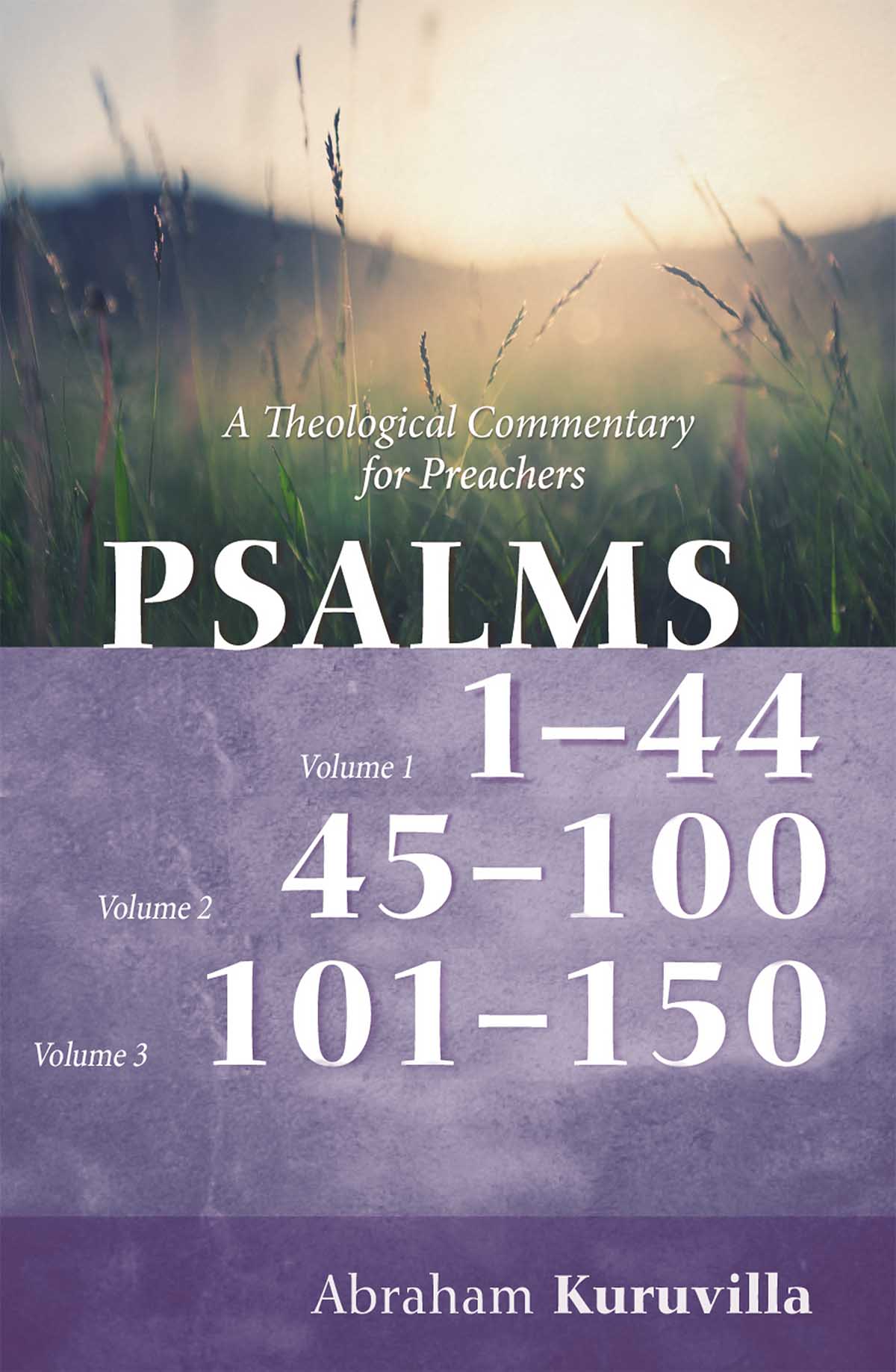
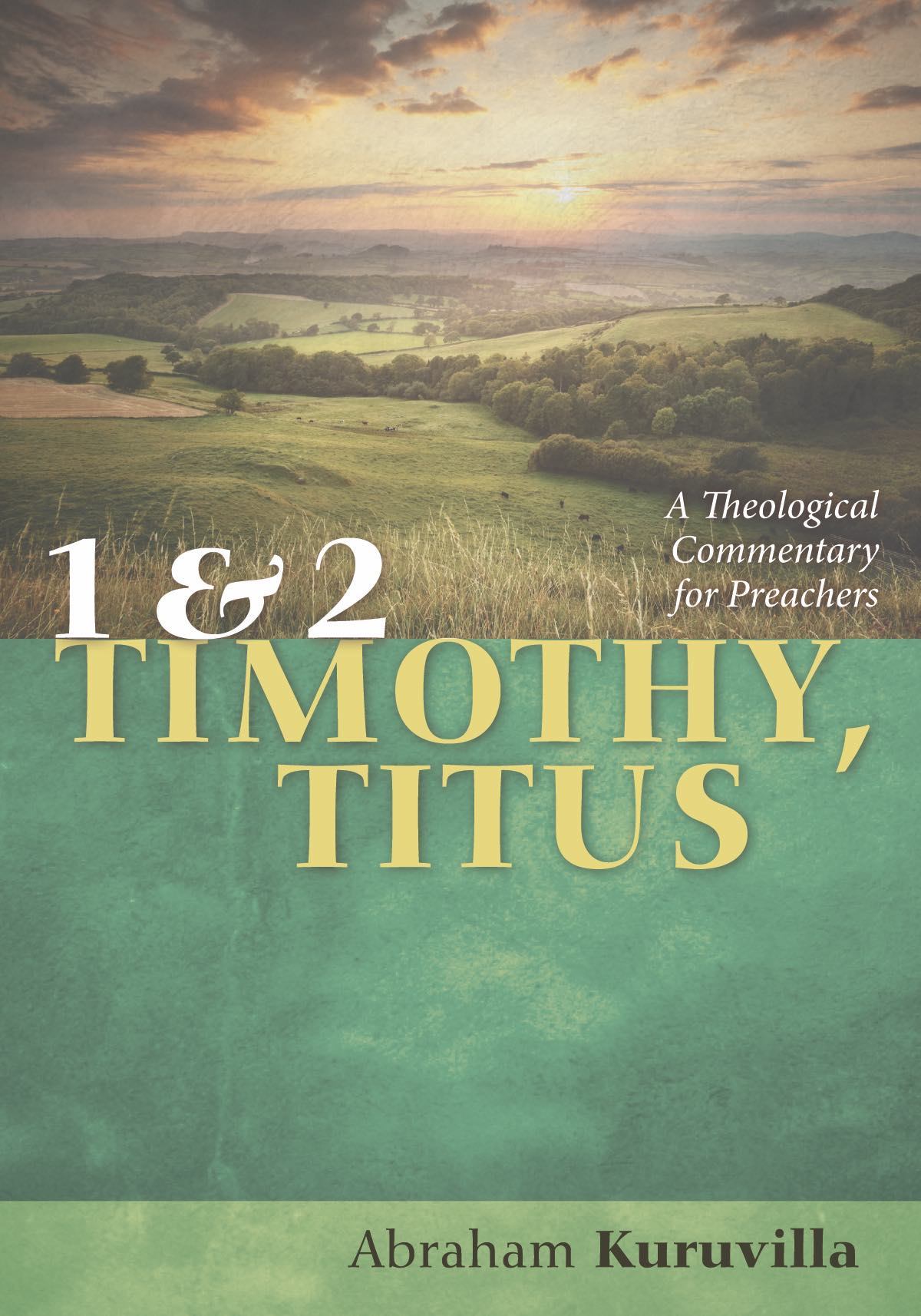
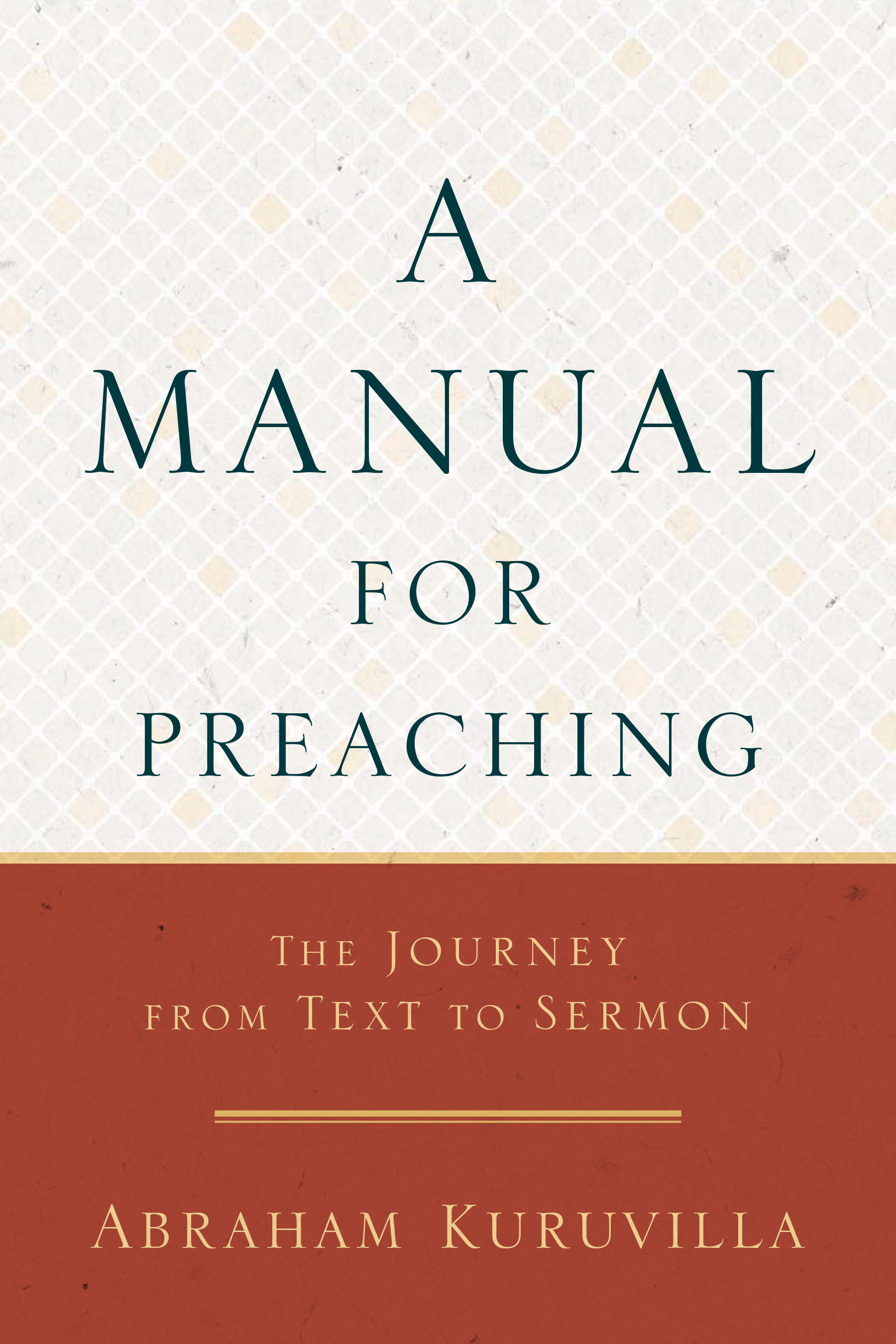

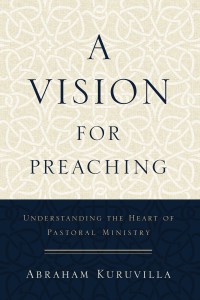





 Abe Kuruvilla is the Carl E. Bates Professor of Christian Preaching at The Southern Baptist Theological Seminary (Louisville, KY), and a dermatologist in private practice. His passion is to explore, explain, and exemplify preaching.
Abe Kuruvilla is the Carl E. Bates Professor of Christian Preaching at The Southern Baptist Theological Seminary (Louisville, KY), and a dermatologist in private practice. His passion is to explore, explain, and exemplify preaching.
2 Comments
Thank you Dr. K. for these expanded explanations and comments. They are very helpful. Still hoping to get down that way to do some further work in this area; do you think DTS will ever consider a more customized DMin and/or PhD work in this area? I’m not sure how this work continues unless someone (like you) is given the opportunity to do more targeted work in pragmatics and homiletics. Considering former ThM students (like me) can do a PhD with 35 hours, it seems to make more sense than a 30-hour DMin where we spend half the time rehashing “big idea” ideas! Anyway, thank you for the work you’re doing. On another note, I just found out our new senior pastor adheres to a historical-redemptive approach to Scripture. He would like to form a preaching team at our church. Practically speaking, it means he and I will work closely together through preaching series. Question: how in the world do you meld these two approaches? I see fundamental differences (e.g., he’s fine preaching for 6+ months on the Sermon on the Mount/I believe in PT, which would necessarily mean larger portions of Scripture; he’s going to lean into Luke 24 (Emmaus) to confirm to the congregation his hermeneutic/I tend to agree with how you addressed that passage in your Griffith Thomas lecture series; he’s going to try and find the Cross at every turn/I’m going to try and present a Christiconic approach). Help?
Thanks, Joe, for the encouragement.
You’re in a tough spot, man, but I appreciate your enterprising nature and desire to handle this carefully and in a godly fashion.
Unfortunately, I don’t see much hope of “melding the two ways,” though the difference is more poignant and sharp when the OT is being tackled. In any case, you should be well-versed in the reasons for the inadequacy of the RH approach. (I’d recommend my Privilege the Text! [Moody, 2013]. Also go through Homiletics and Hermeneutics: Four Views on Preaching Today [Baker, 2019], especially Bryan Chapell’s and my contributions, and our responses to each other.)